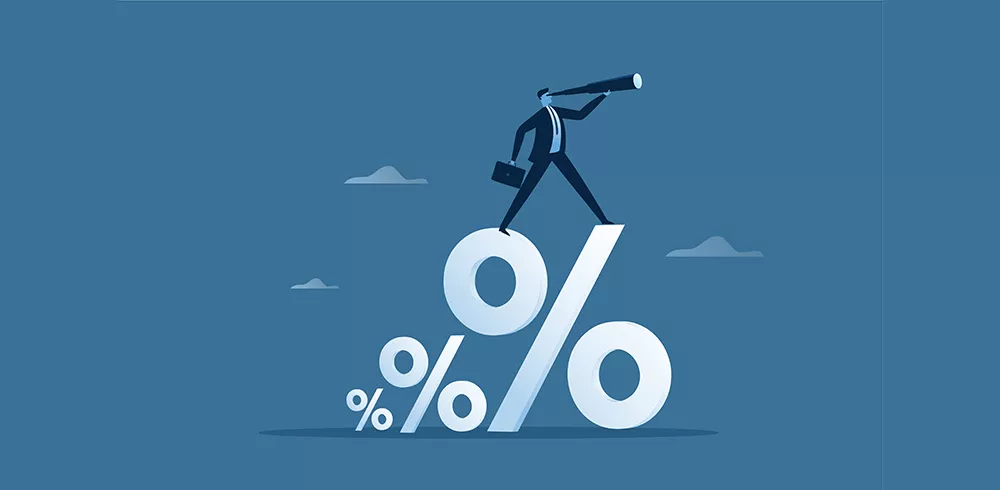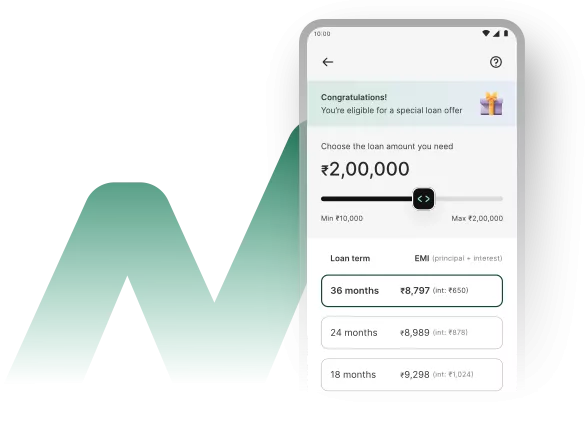Insert here your custom code
Interest Rate vs APR: Key Differences in Personal Loans in India

When you take a personal loan, you will often come across two important terms – interest rate and Annual Percentage Rate (APR). Many borrowers assume they mean the same thing, but they are actually different. The interest rate refers to the yearly percentage charged only on the loan amount (the principal) and represents the basic cost of borrowing. The APR, on the other hand, shows the true annual cost of the loan because it includes not only the interest rate but also other expenses such as processing fees, insurance, and additional charges. Understanding this difference is essential if you want to compare loan offers effectively and calculate the real cost of borrowing. Simply put, the interest rate tells you how much interest you’ll pay on the loan each year, while the APR reveals what you actually end up paying annually once all extra costs are included. This is why the APR is always equal to or higher than the interest rate. In India, the Reserve Bank of India (RBI) has made it mandatory for lenders to clearly disclose the APR—also called the annualised rate of interest—in the Key Fact Statement (KFS) as well as in the loan agreement. This ensures transparency and helps borrowers make informed financial decisions. Fundcera helps you achieve your financial goals with trusted Loan Consultant services. From comparing offers to securing an Instant Personal Loan, we ensure transparency, convenience, and faster processing for every borrower. What Is the Interest Rate? The interest rate on a personal loan is the annual percentage charged by the bank or NBFC on the principal loan amount. In India, lenders usually decide this rate based on RBI-linked benchmarks (like external benchmark rates) or as a fixed rate. For instance, if a bank offers a ₹5 lakh loan at 12% per annum, that percentage will determine your Equated Monthly Instalments (EMIs) depending on your loan tenure. However, the interest rate only reflects part of the cost. It does not account for additional expenses like processing charges or insurance, which can raise the overall cost of borrowing. This is why relying on the interest rate alone can be misleading. In short, the interest rate directly impacts your EMI and the amount you pay as interest, but it does not represent the complete borrowing cost. To get the full picture, always check the APR before finalising a personal loan. What Is the Annual Percentage Rate (APR)? The Annual Percentage Rate (APR) gives a more complete picture of what a loan actually costs. Unlike the interest rate, which only shows the cost of borrowing on the principal amount, the APR includes both the interest rate and any additional expenses such as processing fees, administrative charges, or insurance premiums. In simple terms, APR tells you the true yearly cost of a loan. By combining interest and fees into a single percentage, it makes it much easier to compare different loan offers and understand what you’re really paying. Since APR factors in extra charges, it is usually higher than the basic interest rate. For example, if a bank offers a loan at 10% interest but also adds a 1% processing fee, the APR could rise to around 10.5% or more. This difference may look small, but it can have a significant impact when you calculate the total cost over the entire loan tenure. To protect borrowers, Indian lenders are required by law to clearly mention the APR (also called the annualised rate of interest) in loan agreements and Key Fact Statements. This ensures transparency and allows you to look beyond the headline interest rate before making a borrowing decision. Interest Rate vs APR: Understanding the Key Differences When you compare personal loans, you’ll often see two terms used side by side – the interest rate and the Annual Percentage Rate (APR). While they may sound similar, they represent two very different ways of measuring the cost of borrowing. The interest rate is the percentage charged annually on the principal loan amount. It shows you the basic borrowing cost and directly impacts your EMI since it determines how much interest you’ll pay on top of the principal. However, this figure does not take into account any additional charges that lenders may apply. The APR, on the other hand, is a more comprehensive measure of the total cost of a loan. It includes not only the interest rate but also extra expenses such as processing fees, administrative charges, insurance premiums, or service costs. Because of these additions, the APR is always equal to or higher than the interest rate. For example, if a lender offers a loan at 10% interest but also charges a 1% processing fee, the APR could be closer to 10.5% or more. This means that while the EMI might look affordable based on the interest rate alone, the APR reveals the true financial impact of the loan. Another key difference is in how these figures are disclosed. Interest rates are quoted by lenders but are not always standardized, which means borrowers may find it difficult to make fair comparisons. In contrast, the Reserve Bank of India (RBI) requires lenders to disclose the APR—also referred to as the annualised rate of interest—in both the Key Fact Statement (KFS) and loan agreement. This regulatory requirement ensures transparency and helps borrowers compare loan offers more accurately. The usefulness of each measure also differs. The interest rate is good for quickly understanding how much interest you’ll be charged on a loan, but it does not show the complete financial burden. The APR, however, serves as the best tool for comparing overall loan deals because it reflects the total cost of borrowing. While the EMI may not change whether you look at the interest rate or the APR, the APR helps you uncover any hidden costs that might otherwise go unnoticed.

Why the Difference Matters: The Real Cost of a Loan
The gap between interest rate and APR isn’t just a technical detail—it directly affects how much you actually pay. For instance, imagine two lenders advertising the same 12% interest rate. One charges a 2% processing fee, while the other does not. On the surface, both loans may look identical, and their EMIs (principal + interest) will be nearly the same. But once you include the processing fee, the loan with the extra charge ends up costing more because its APR is higher.
Take this example: you borrow ₹5,00,000 at 12% interest for 5 years (60 months). The EMI works out to about ₹11,122, meaning you pay roughly ₹1.67 lakh in total interest over the loan term. Now, if the lender also adds a 2% processing fee (₹10,000), your effective loan amount reduces to ₹4,90,000 even though your repayment schedule stays the same. This bumps up your APR to around 12.9%, increasing your overall borrowing cost to about ₹1.77 lakh. In short, fees can make a noticeable difference even when the headline interest rate looks attractive.
RBI Guidelines: Transparency in Loan Pricing
To protect borrowers from such confusion, the Reserve Bank of India (RBI) has made transparency in loan pricing mandatory. For personal loans, lenders are required to clearly disclose the annualised rate of interest (APR) in both the Key Fact Statement (KFS) and the loan agreement. These documents must outline the nominal interest rate, EMI schedule, and all applicable fees, giving borrowers a clear view of the total cost.
In its recent circular, the RBI stated:
“Annualised rate of interest/Annual Percentage Rate (APR) … shall be disclosed in the Key Fact Statement (KFS) and the loan agreement.”
This rule ensures that borrowers can see beyond the advertised interest rate and understand the true cost of borrowing. For example, if a bank quotes a 12% interest rate but the KFS shows an APR of 13%, you’ll immediately know that the extra 1% comes from processing fees, insurance, or other charges.
Key Takeaways for Borrowers
Always read the KFS carefully—it lists both the interest rate and APR.
Ask about all possible charges, including processing fees, prepayment penalties, or insurance premiums.
Don’t judge a loan by its interest rate alone; compare APRs to see the complete cost.
Use the RBI’s mandatory APR disclosure to your advantage and shop around for the most cost-effective loan option.

Empowering your financial journey with seamless Self-Apply Loan Options and dedicated Loan Agent Assistance, all integrated into smart, value-packed Subscription Plans.
Experience transparency, speed, and personalized support—only at Consult.Fundcera.com
GST : 24AAGCF2801F1Z6
CIN : U66190GJ2025PTC159913
Ready To Apply?
We make finance possible in just 3 simple steps to provide a fast, flexible and friendly customer experience
@copyright 2025 Fundcera | Privacy Policy
.webp)
.webp)
.webp)
.webp)
